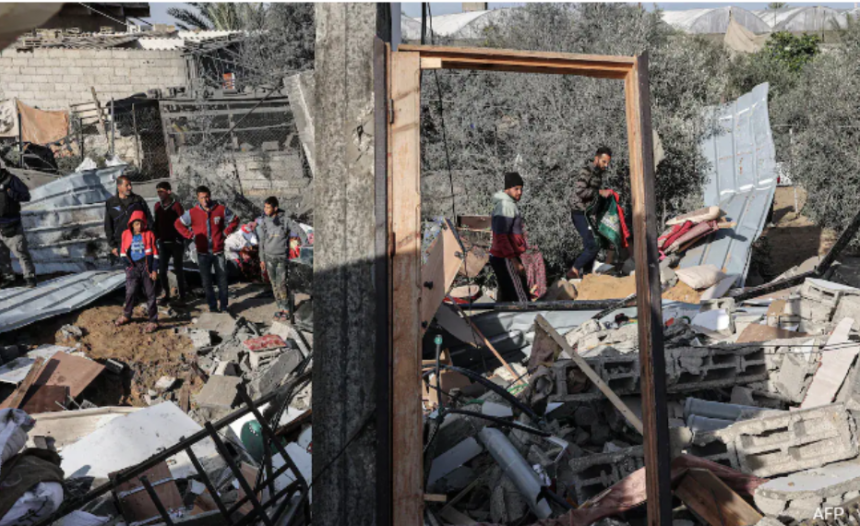U.S. Hopes to Close Gaps in Israel-Hamas Truce Talks:-
U.S. Hopes to Close Gaps As tensions persist in the Middle East, efforts to forge a lasting ceasefire between Israel and Hamas have become a focal point of international diplomacy. The United States, alongside regional partners and global allies, has stepped up its mediation efforts in hopes of bridging the gaps that have long hindered progress towards peace.
Background of the Conflict
The conflict between Israel and Hamas is deeply rooted in decades of historical, political, and religious complexities. Hamas, designated as a terrorist organization by Israel, the United States, and other countries, has controlled the Gaza Strip since 2007. The group’s governance has been marked by sporadic violence, rocket attacks on Israeli territory, and clashes with Israeli security forces.
Israel, on the other hand, views Hamas as a threat to its security and has implemented military operations and blockades to curb Hamas’s influence and prevent arms smuggling into Gaza. This cycle of violence has led to numerous casualties on both sides, devastating infrastructure in Gaza, and exacerbating humanitarian crises.  for more information click on this link
for more information click on this link
U.S. Diplomatic Efforts
Amidst the recurring cycles of conflict, the United States has consistently advocated for a two-state solution, envisioning an independent and secure Israel alongside a viable Palestinian state. The Biden administration has expressed a commitment to reengaging with both parties and regional stakeholders to facilitate negotiations and achieve a sustainable peace agreement.
One of the key challenges in the truce talks has been bridging the gaps in trust and perception between Israel and Hamas. Israel insists on strict security measures to prevent Hamas from rearming and launching attacks, while Hamas demands an end to economic blockades and military operations in Gaza. These divergent priorities have often stalled progress in previous negotiations.
Recent Developments and Mediation Efforts
In recent months, diplomatic efforts led by the U.S. and regional mediators have shown some promise. Ceasefire agreements brokered by Egypt and Qatar have temporarily reduced hostilities, providing a window of opportunity for broader negotiations. The U.S. has leveraged its diplomatic channels to encourage confidence-building measures, humanitarian aid delivery, and economic development initiatives in Gaza.  for more information click on this link
for more information click on this link
Efforts to address Gaza’s humanitarian crisis, exacerbated by years of conflict and blockades, remain a critical component of the truce talks. The U.S. has pledged financial assistance for reconstruction efforts and humanitarian aid, emphasizing the importance of improving living conditions for Palestinians while ensuring Israel’s security concerns are addressed.
Challenges Ahead
Despite these efforts, significant challenges remain on the path to a comprehensive peace agreement. Internal divisions among Palestinian factions, including Hamas and the Palestinian Authority, complicate negotiations, as do political changes within Israel and the broader region. The status of Jerusalem, settlement expansion in the West Bank, and the rights of Palestinian refugees are longstanding issues that continue to fuel tensions.
Moreover, the influence of external actors, including Iran and other regional powers, adds another layer of complexity to the negotiations. Geopolitical rivalries and differing strategic interests often intersect with the Israeli-Palestinian conflict, shaping the dynamics of truce talks and regional stability.
Path Forward: Prospects for Peace
As the U.S. continues its diplomatic engagement, the prospects for a lasting truce between Israel and Hamas hinge on several factors: mutual recognition of each other’s security concerns, commitment to international law and humanitarian standards, and a genuine willingness to compromise for the sake of peace. Confidence-building measures, such as prisoner exchanges and economic incentives, could build momentum towards broader negotiations on core issues.
Ultimately, achieving a durable peace U.S. Hopes to Close Gaps agreement requires sustained political will from all parties involved, as well as unwavering support from the international community. The U.S., in collaboration with regional partners, remains committed to facilitating dialogue, addressing humanitarian needs, and advancing a vision of security and prosperity for Israelis and Palestinians alike.
In conclusion, while the road to peace in the Israeli-Palestinian U.S. Hopes to Close Gaps conflict remains fraught with challenges, diplomatic efforts spearheaded by the U.S. offer a glimmer of hope for reconciliation and stability in the region. By bridging gaps in truce talks and fostering mutual understanding, there is potential to lay the groundwork for a more peaceful future. ALSO READ:- Hezbollah Fires Rockets at Israel in Retaliation for Senior Commander’s Killing 2024





